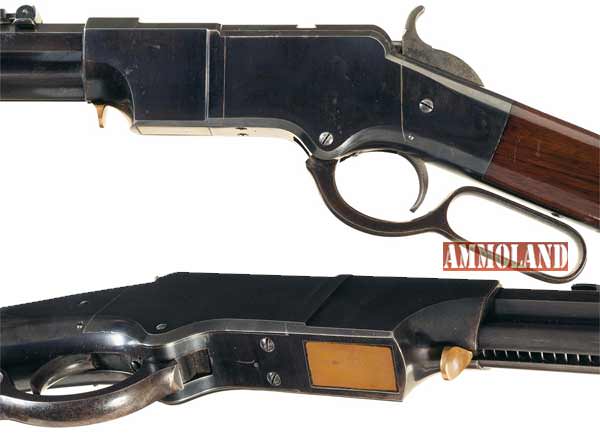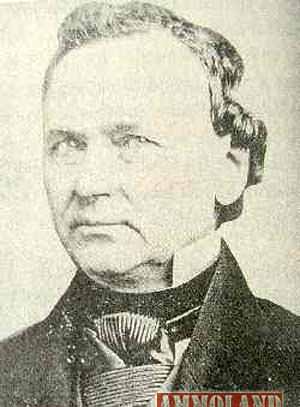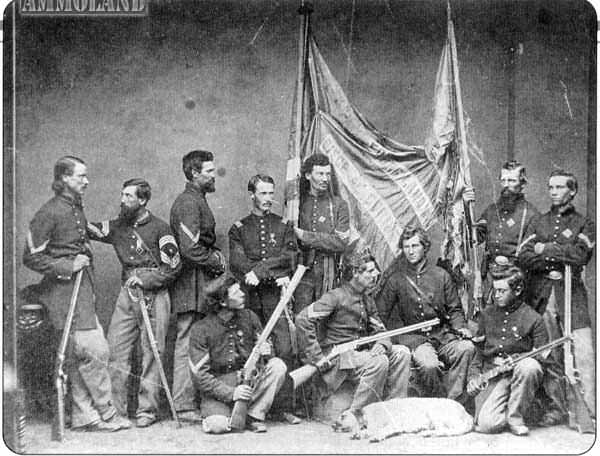By Marc Cammack
Henry Rifles History of the Lever Action

Bangor, Maine – -(Ammoland.com)- The 1860 Henry rifles was one of the most advanced firearm designs to come out of the American Civil War.
It helped save the lives of many Union soldiers, and angered Confederate soldiers who faced it in battle.
It also served as the basis for the successful and famous Winchester line of lever action rifles. However the Henry rifle embodied ideas from several brilliant inventors over the course of many years including ideas by Horace Smith and Daniel Wesson.

The Henry rifle’s roots laid in several early designs. An inventor from New York City named Walter Hunt played a pivotal role. Hunt designed a new type of bullet called the Rocket Ball, which held powder inside the lead bullet. Hunt’s design proved to be too impractical but it became the basis for a later rifle designed by Lewis Jennings. Jennings designed a .54 rifle with a tubular magazine, with an improved version of the Rocket ball cartridge.
About 1,000 of these Jennings rifles were made and much like Walter Hunt’s design they proved to be too complicated.
The next stepping stone in the Henry design was called the Volcanic Repeater.
The story of the Volcanic Repeater involved some of the most famous names in American Firearms, including Horace Smith and Daniel Wesson.
The Volcanic Repeater was made both in a pistol and carbine. An investor to this company was a shirt maker named Oliver Winchester. After some financial troubles Smith and Wesson left the company to work with revolvers, but the Volcanic Arms Company still remained in business.

The Volcanic Arms Company changed its name in 1857 to the New Haven Arms Company. Oliver Winchester became the president of the company as well, and an employee named Benjamin Tyler Henry took a major role in improving the Volcanic Repeater. Henry had been an employee of Springfield Armory, and improved the Volcanic ammunition by designing a rimfire self contained cartridge.
The result of Benjamin Tyler Henry’s work was the Model 1860 Henry lever action rifle.
The Henry rifle held 16 rounds of .44 rimfire ammunition in a tubular magazine at a time when most soldiers were equipped with single shot muzzle loading rifles. The Henry was perhaps the most advanced infantry weapon of the American Civil War. The rifles mostly had brass frames but an estimated 200-400 Henry rifles were made with iron frames (see image above) early in production.

Henry Rifles & the Civil War
The outbreak of the American Civil War seemed to be a great opportunity for Henry and Winchester to sell their new innovate rifle. However they faced opposition from the Chief of Ordnance James Ripley. Ripley feared that repeating weapons were unreliable and that their introduction would be a logistical nightmare for the Union Army.
In order to sell the weapon Henry rifles were gifted to the government officials such as Edwin Stanton and Abraham Lincoln.
Despite these attempts there was still opposition from the Ordnance Department that prevented mass adoption of the Henry rifle.
The Henry rifle found its way into combat through private purchases during the Civil War. One use of a Henry rifle by a Kentucky cavalry captain named James Wilson proved to be a great marketing story for the New Haven Arms Company. Wilson had been having dinner with his family when seven Confederate guerrillas arrived to kill him. The guerrillas began shooting but did not hit Wilson. Wilson asked that if they were to kill him that they would do it outside and not in front of his family. The guerrillas agreed, and as Wilson exited he grabbed his hidden Henry rifle and opened fire. Wilson fired eight shots killing all seven of the guerrillas.
This action convinced the state of Kentucky to arm Wilson’s unit with Henry rifles. The Federal government eventually purchased some of the Henry rifles in small numbers. 1,731 in total were officially purchased by the Federal government. Testing revealed that they were not quite as rugged as the more popular Spencer carbine. The 1st D.C. Cavalry were armed in part with Henry rifles. The 1st D.C. Cavalry faced off with the famous Confederate guerrilla John Mosby. Mosby said of the Henry rifle that:
“He did not care for the common gun or Spencer’s repeater, but as for those guns (Henrys) that they could wind up on Sunday, and shoot all the week, it was useless to fight against them”.

Many more Henrys were purchased privately. One such regiment which had many privately purchased Henrys was the 7th Illinois Infantry Regiment. Henry rifles were not cheap by the standards of the Civil War costing about $50 per rifle, and the average salary of a Union Private during the Civil War was only $13 per month. The Battle of Allatoona Pass in Georgia, further proved the effectiveness of the Henry rifle. The 7th Illinois armed with Henrys took part in a defensive action against an attacking division of Confederate troops. One officer gave the Henry rifle a great amount of credit for the victory at Allatoona Pass.
The post Civil War era would see the United States military going to single shot breech loading weapons. The Springfield Trapdoor single shot proved to be an answer to the Army’s search for a more modern yet economical weapon with which it could equip troops in the West.
The Henry saw use in the American West, and some Sioux Natives used the weapon against Custer’s 7th Cavalry at Little Big Horn.
Improvements were made to the Henry by a designer named Nelson King namely a loading gate on the right side of the receiver, and a hand guard. This new rifle was still manufactured in New Haven but the company had a different name Winchester, and the rifle was known as the Model 1866 Winchester.

* Images: Rock Island Auction Company ( www.rockislandauction.com )
About Marc Cammack
Marc Cammack has been collecting firearms since he was 14 years old.
His interests are primarily military surplus firearms of the late 19th into the 1950’s. He has studied these in depth, and currently volunteers at two local museums providing them with accurate information about their firearms.
He is a graduate of the University of Maine with a bachelor’s degree in history. He has studied modern European and American history since the age of 9, and has been shooting since the age of 11. He currently resides just outside of Bangor, Maine.


One drawback you failed to mention regarding the slotted mag tube. A tube is an inherently rigid form but cut a slot down the side and it instantly becomes quite flimsy. To compensate the Henry’s magazine had to be machined from steel bar stock which was heavy and costly to produce. With the ’66 Winchester substituting a simple tube of rolled steel saved a full pound of weight and reduced the production cost. The Henry in 1865 sold for $42 while the 1866 sold for $17.